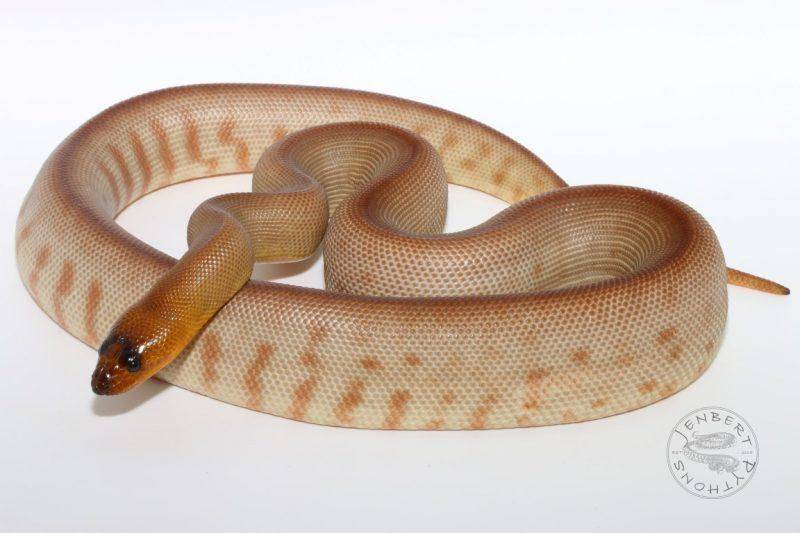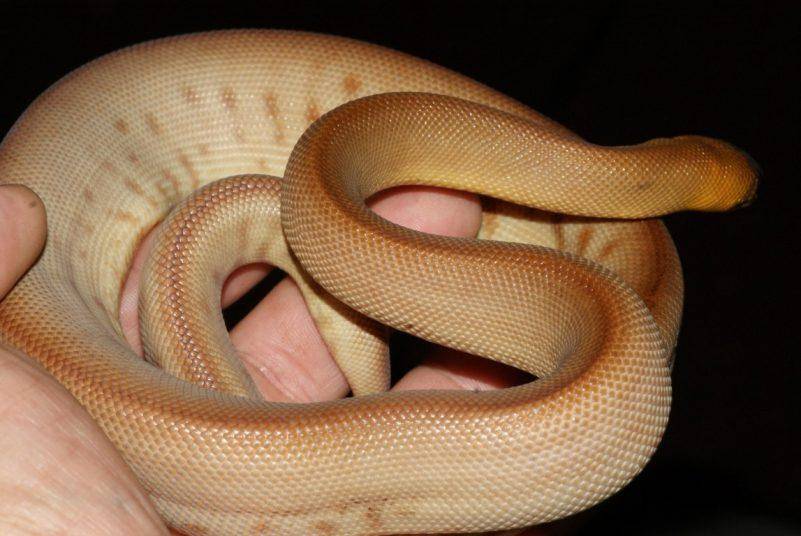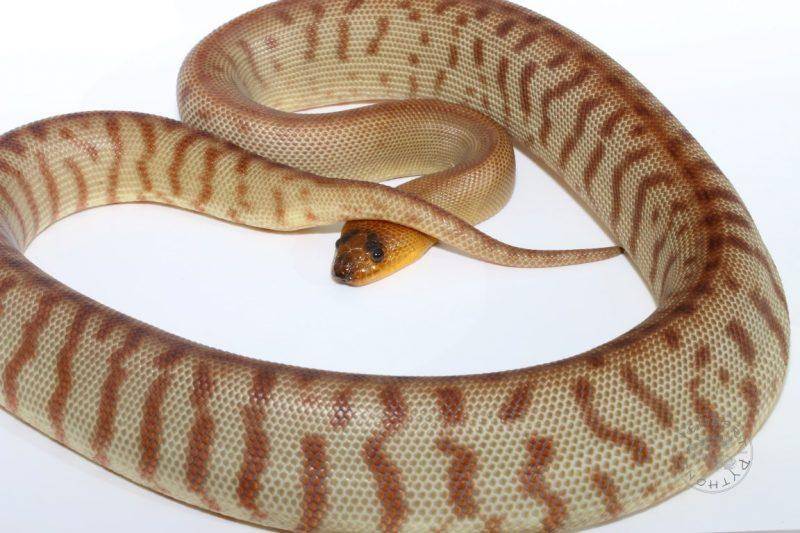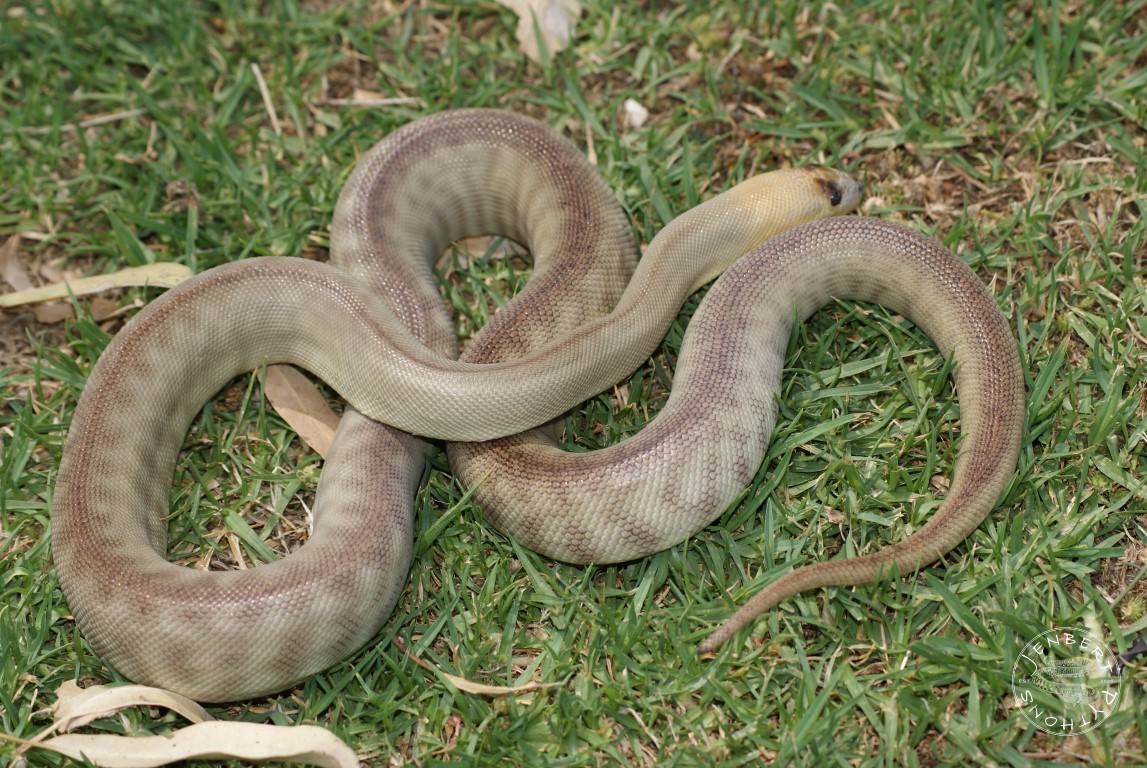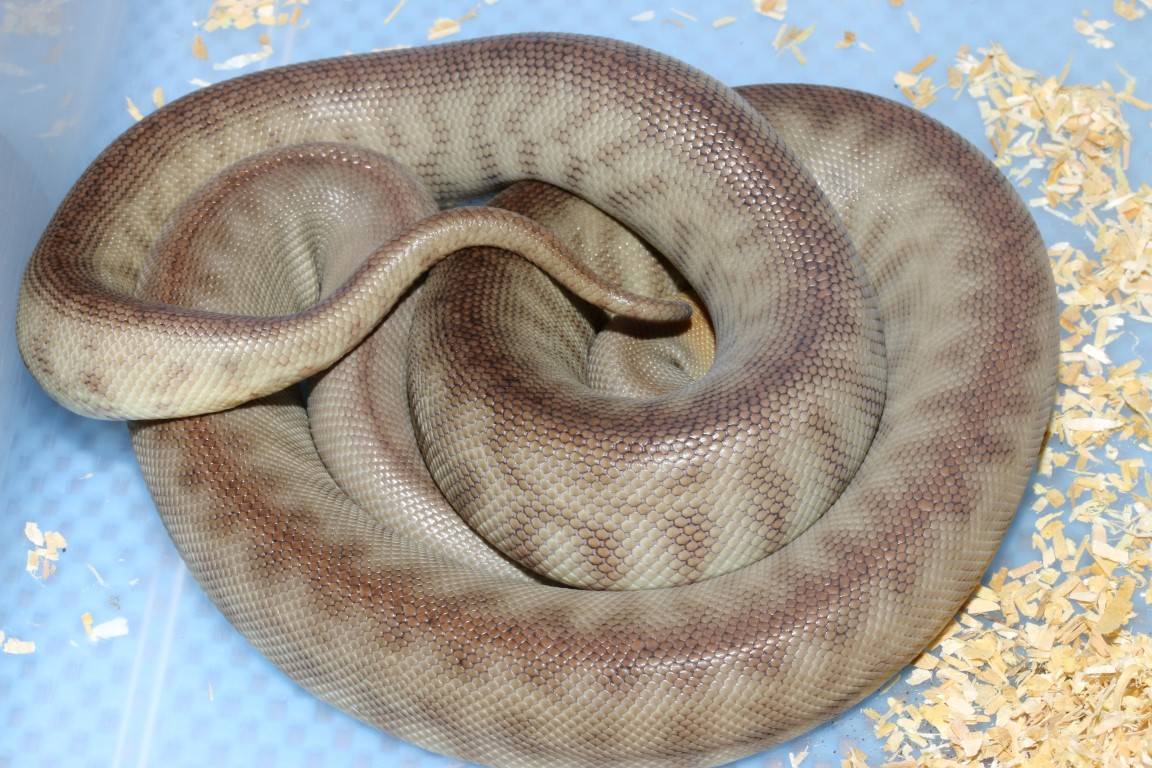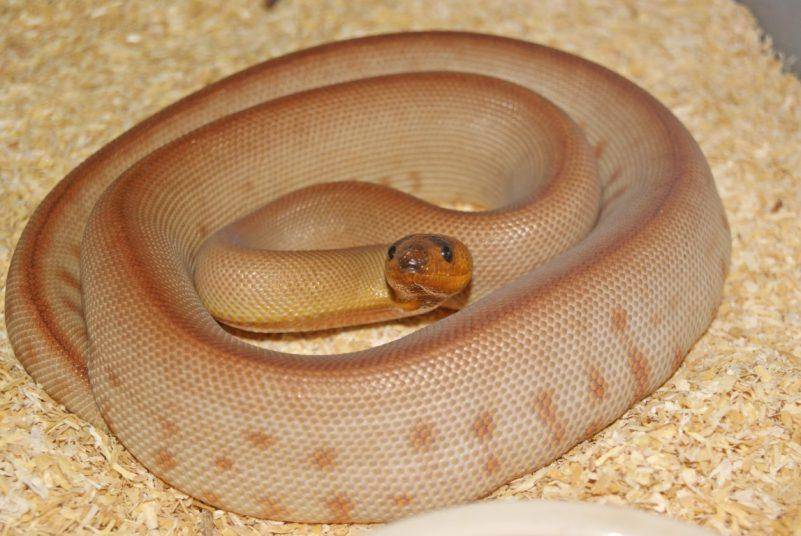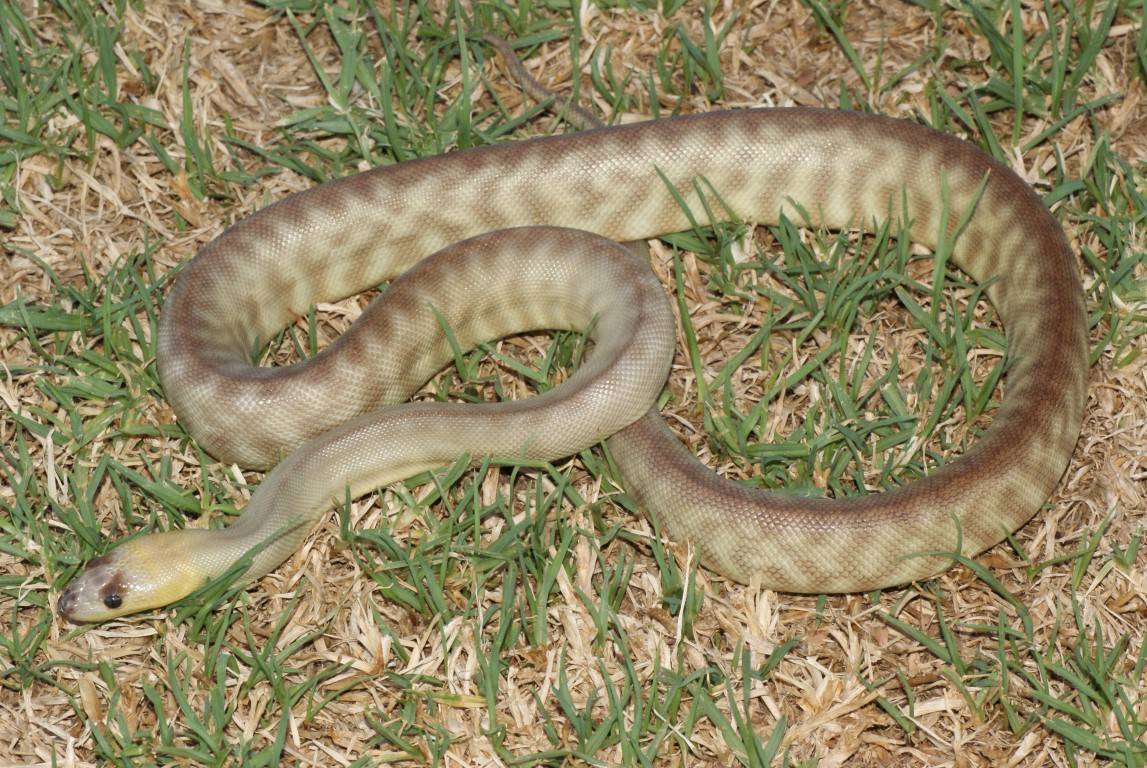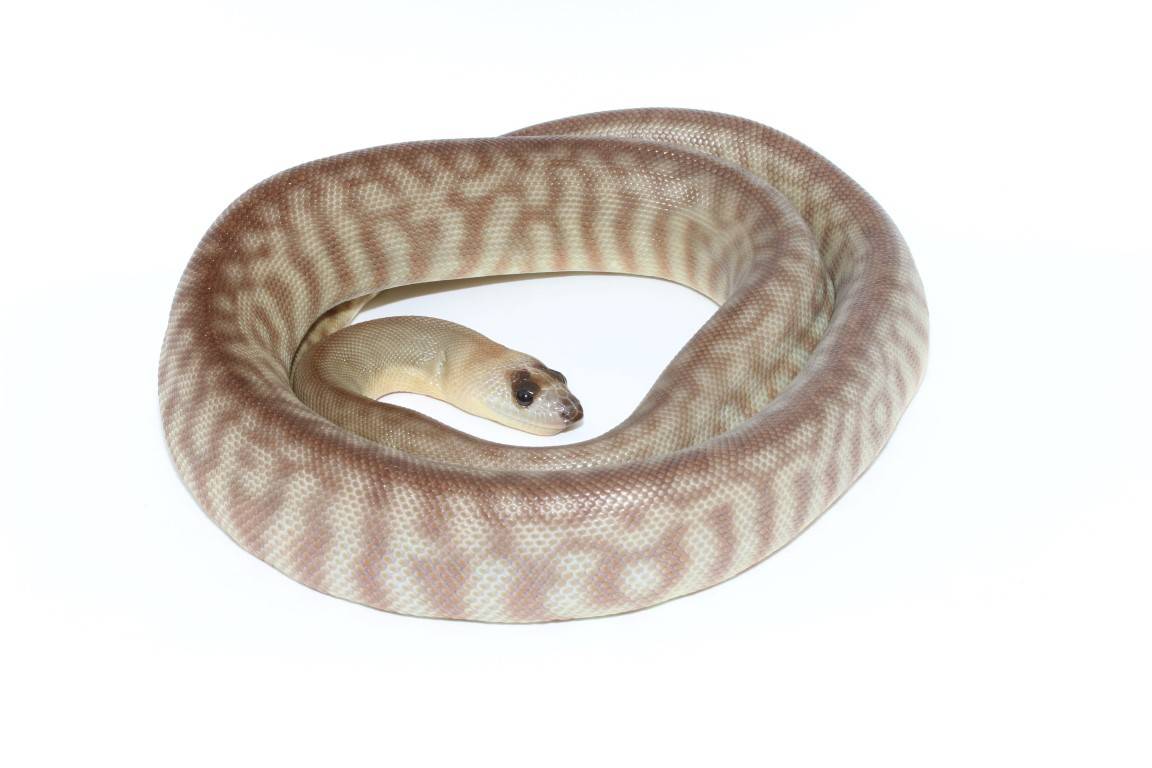WOMA PYTHON (Aspidites ramsayi)
This snake is seldom encountered in the wild because it lives far from populated areas.
In this species, the head is not distinct from the neck. The Woma varies in coloration from grey to olive to reddish brown above, with darker, narrow cross-bands. The belly is cream to yellow, with pink or brown blotches. The average length is 1 1/2m (nearly 5 ft) with a maximum of about 2.7m (8.8 ft) for the SA locality Woma Python.
The Woma is found in the very dry inland regions of all Australian states except Victoria and Tasmania. Here it shelters in hollow logs, animal burrows or thick vegetation.
Also known as the Sand Python, it has an unusual method for killing its prey. Because it does much of its hunting down burrows, there is not enough room to coil around its victim to suffocate it. Instead, it squashes the victim against the wall of the burrow to crush it.
The Woma may also lure its prey by wriggling the end of its tail, as Death Adders do. Like other pythons, it eats small mammals, birds and reptiles.
Because it lives in such remote, inhospitable areas of the continent, little is known about its reproductive biology.

